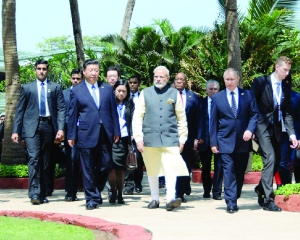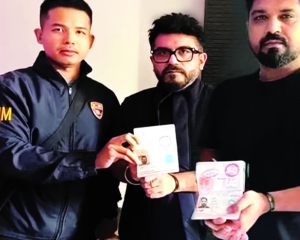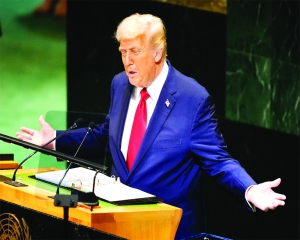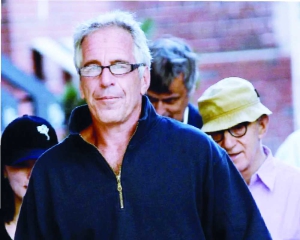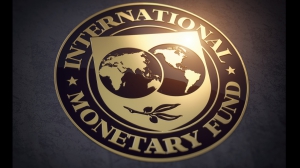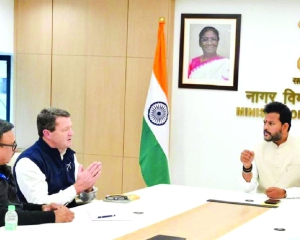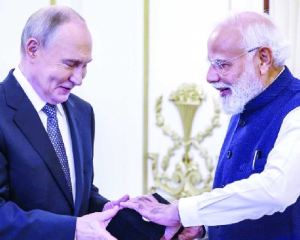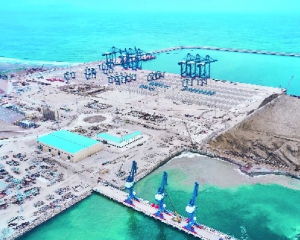More than half a century after Indira Gandhi imposed the dreaded Emergency, it continues to be referred to as the ‘Darkest Chapter in the history of Indian Democracy’. Ironically, the majority of Indians that comprise more than two-thirds of the country’s total population are ‘pre-historic’ even the retired parents of Generation Z have no personal recall of forced nasbandi (vasectomies) and Nasha Bandi (prohibition). How could they they would have been ten-year-old or younger children barely registering the tyranny that had suddenly descended on the land? Those of us now at the threshold of eighty — dwindling in numbers with each passing day — have fast-fading memories of the spoilt brat Sanjay strutting the stage with his thug-like brigade systematically subverting the rule of law and endearing himself to his insecure mother.
The early days of the Emergency and the midnight arrests of all the prominent leaders of the opposition, journalists and social activists who found Sanjay obnoxious, stunned the country. Common people were petrified and those expected to bend volunteered to crawl. The greatest letdown was the judiciary with one or two honourable exceptions. In ADM Jubalpur versus the Govt the Supreme Court didn’t cover itself in glory. Judge HR Khanna dissented and chose to squander away a chance to become the CJI Justice Bhagwati greeted Mrs G with a bouquet lavishing praise on her much before CJI Chandrachud invited NaMo for an arati at his home tarnishing an image of fearless independence carefully projected for years.
Very few editors like Kuldip Nayyar and NC Chakravarti showed spine others like Sham Lal at TOI chose discretion over valour. Khushwant Singh happily supported the new dispensation. This was the season of sycophants. Deb Kant Barua the Congress president came out with the demeaning slogan- ‘Indira is India, India is Indira!’ But it was people like Banshi Lal, Buta Singh and Zail Singh who had the field day pampering Sanjay. In hindsight, it seems amazing how easily scions of other political dynasties like Shukla Parivar in MP, and the Abdulla clan in Kashmir accepted subordination to dynastic rule at the centre. The bitter taste in the mouth was reduced a bit by the sugar coating provided by the old Gandhian Vinoba Bhave who called in Anushasan Parva. Mrs G was supported by the CPI — Mohan Kumarmanglam and Syed Nurul Hasan were in her cabinet- and not surprisingly the leftist ideologues defended this step as a masterstroke that stopped India’s slide to the precipice of anarchy.
Trains ran on time, for a very short while and policemen were afraid to collect hafta. Hoarders and black marketeers displayed a generous bone in their body for a short while. But soon, the majority of the population realised that things were returning to normal. Inanities of Sanjay’s 20 20 — point program or glib slogans like Garibi Hatao failed to galvanise the masses. Mrs Gandhi alienated not only her foreign admirers like Mary Seaton and Dorothy Woodman but also long-time Indian friends and confidantes like Pupul Jaykar.
By the end of the first year Emergency had lost much of its sting. The Indian genius for juga had found loopholes to get around enforcement. Everyone had discovered a contact a distant relative, an old classmate or a wheeler-dealer who knew someone in the Youth Congress led by Sanjay who could get an arrested person released on bail or stop harassment by local authorities who were under pressure to fulfil assigned quotas for vasectomy. Bootleggers knew the ropes to carry on delivery of IMFL and hootch. Everyone who was anyone threw his weight around. The assistant to the Lt Governor of Delhi was more important than the Lat Sahib. Humiliated beyond tolerance Kishan Chand ICS jumped into the well leaving behind a note Zillat ki Zindagi se maut behtar hai. There were competent officers like Jagmohan at DDA who lost no time in jumping onto the bandwagon and hitching the rising star to fulfil their ambitious agenda of ‘rebuilding’ Shahjahanabad.
Months passed and all kinds of rumours circulated. Nauseating tales of debauchery in the Ministry of Information and Broadcasting with VC Shukla at its helm. Soft-spoken and suave, Nehru family loyalist IK Gujral was ousted and despatched to the USSR (virtually in exile) as the ambassador to make room for Shukla who had an unenviable reputation as a playboy. Strange ‘comings and goings’ in the PM’s house were whispered. Rasputin-like figure of Mrs G’s Yoga Teacher Dhirendra Brahmchari who flew his plane and had set up an arms factory at his Ashram in Jammu, was one of them. Muhammad Yunus a nephew of Badshah Khan and a senior diplomat emerged as a trusted advisor. Both had the intriguing talent to manage Sanjay.
There was a distressing increase in police excesses and extra-judicial killings as days passed. The teenage student Rajan was allegedly kidnapped by the police in Kerala and never seen again. In Delhi, the dreaded dacoit Sunder was eliminated by DIG Bhinder under very suspicious circumstances.
Like in 1942, with all the popular leaders behind bars, and avenues of peaceful protest blocked some daring resistors justified taking up arms. It was the Baroda Dynamite Case that caught the nations’ imagination and seemed to offer a glimmer of hope in the night. Those associated with George were ruthlessly tortured — his brother Lawrence and associate Kannada actress Sneh Lata Reddy suffered the most. Third Degree wasn’t the only method to emasculate opponents. Income Tax raids targeted didn’t spare celebrities and actors like Kishore Kumar to silence them. Even old allies and mentors weren’t spared. PN Haksar had fallen from grace after criticising Sanjay’s extra-constitutional antics and his relatives the Pandit Brothers paid the price. The censors exerted overtime to persecute and bankrupt film producer Amrit Nahata who had dared to make a dark satirical film Kissa Kursi ka after the Allahabad High Court set aside Indira Gandhi’s election.
There were rare moments of relief from tyrannical oppression like when Dr Subrahmanyam Swami made a dramatic appearance in the Parliament to register his attendance and then slipped away before he could be apprehended by the marshals stationed in the House. Incidents like this exposed the chinks in the iron lady’s armour and her vulnerabilities.
Finally, for reasons best known to herself Mrs Gandhi lifted Emergency and called for elections. The voters turned out in large numbers and the silent suffering majority spoke through ballots. Indira Gandhi suffered a devastating defeat. The Congress was all but annihilated in its north Indian bastions. It seemed that Indian Democracy had survived the assault on it. Indira once hailed as Durga riding a Tiger vanquishing India’s enemies was being consigned to the dustbin of history.
Her rise like the Phoenix in less than two years and resumption of power couldn’t be foreseen at that moment. But that is another story. Critics of Prime Minister Modi and BJP-NDA think that raking up the Emergency and reviving painful memories serve no other purpose but to distract us from present problems and malign a comatose Congress Party.
In our view, this is playing partisan petty politics. In the past decade, many Indians have been queasy to raise questions about the ‘undeclared’ Emergency we are alleged to be living in, the steady erosion of fundamental rights, particularly Freedom of Expression and subversion of institutions mandated to protect the constitution. Surely, revisiting the Emergency of 1975 puts a distant mirror in our hands to look at the reflection of the present. We should be grateful for this opportunity.
(The writer is Historian and Retd. Professor of International relations, JNU)
















